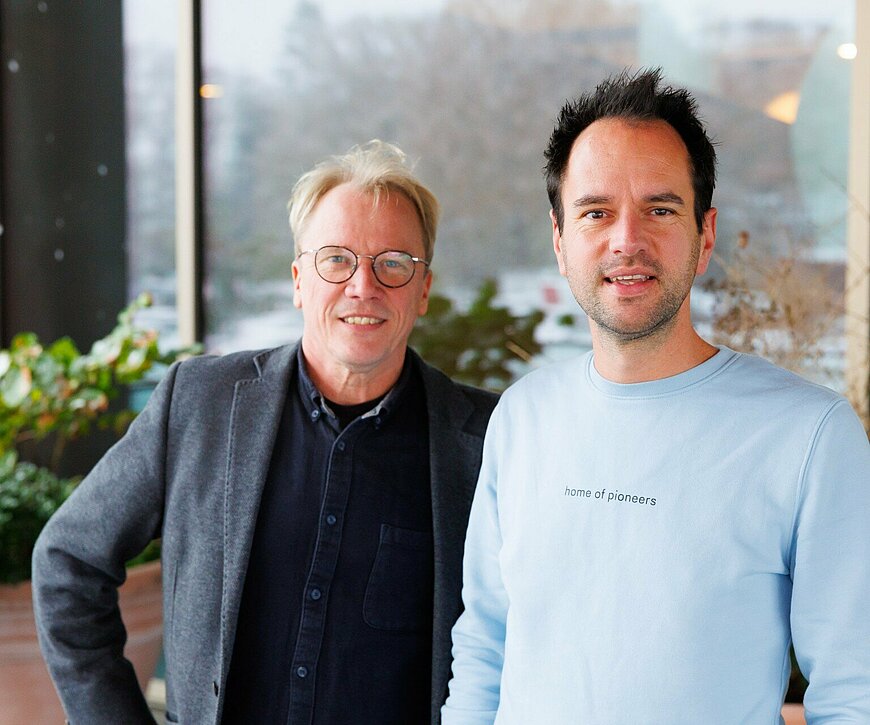‘In this region, you either work in technology or with technology, and often in an international environment.’

The ink on the Techkwadraat plan has barely dried. Over the past few months, education professionals from the Brainport region have been working with Brainport Development on this plan to apply for funding for innovative technical and technology education.Techkwadraat is a subsidy programme from the Ministry of Education, Culture and Science and the Ministry of Economic Affairs and Climate Policy. Brainport for Education is taking the lead in our region in implementing the plans from the programme.
Before we zoom in further on the Techkwadraat plan, let's go back in time. Previously, the technology promotion and internationalisation programmes were still split up within Brainport Development. ‘These programmes have led to countless successful projects and initiatives, but these themes are now increasingly converging,’ explains Paul Hulshoff, Techkwadraat project leader and regional supporter. ’That is why it was decided to bring these themes together under one heading: Brainport for Education. This will ensure that education is better aligned with the rapidly changing world and the unique opportunities in the region.
International environment
Hans Vasse, Techkwadraat programme manager, says that seven years ago schools still had to be convinced of the opportunities offered by internationalisation. But now it has become a natural part of education, just like technology. ‘In this region, you either work in technology or with technology, and you often do so in an international environment’, he says. ‘We now call integrating these themes into the daily curriculum innovative education’.
Challenges
The biggest challenge within Brainport for Education is to create a coherent and efficient programme without overlap. Paul and Hans emphasise that there are many initiatives, such as teacher professionalisation, technology promotion and support for internationalisation, but that these components are often offered separately from each other. ‘All these initiatives have their own pot or programme for the same theme, but how do you ensure that we don't do the same thing five times over?’
In addition, it is a challenge to involve all schools and students, including those groups that currently find it more difficult to participate. Paul gives the example that some teachers are hesitant to take a class to a (technical) company because it can be challenging in terms of class management. ‘The goal is to offer all children, including pupils in special education and those from diverse backgrounds, the opportunity to participate in the innovative possibilities in the region.’
The Brainport for Education platform
That is exactly what Brainport for Education helps with. The team works closely with schools, businesses and cultural institutions to innovate education and prepare pupils for the future. Paul: ‘Our platform offers an overview of teaching materials, events, workshops and activities that tie in with themes such as technology and internationalisation. We hope to help schools make targeted and conscious choices with this. And we want to support education professionals in developing the talents of their pupils.’
Tech Square
Techkwadraat is another concrete example that has emerged from the collaboration. Within this project, schools work together with libraries, museums, science centres and companies to develop programmes that meet the needs of students. Techkwadraat is a national programme funded by the Nationaal Groeifonds. It focuses on primary and secondary schools throughout the Netherlands, with the aim of introducing pupils to engineering and technology at an early age. ‘We would like to be considered for that subsidy from the National Growth Fund’, explains Paul. ‘In the Brainport region, we have been promoting engineering for years. Where other regions are just starting, we already have more than ten years of experience. We really have a head start when it comes to this, and so we can make great strides. That is why we did not opt for a minimal application, but rather an ambitious plan in which eighty percent of the primary schools, forty secondary schools and extracurricular learning environments in our region participate.
Hans: ‘We want to take the burden off schools with this programme. They do not have to write a financial statement or submit a plan themselves to be eligible for a subsidy. In addition, the money will soon be managed centrally and used to organise activities that all schools can make use of. In this way, we are creating an accessible programme that excludes no one.’
The application has now been submitted. It will be clear in June whether the application has been approved.
Model region
According to Paul and Hans, the strength of Brainport lies in its cooperation. ‘Here, we don't have to drag and pull. Parties are eager to participate because they see that this way of working offers opportunities for everyone. For example, every Tuesday we meet with eight people from the field. They read along so that we come up with a plan that is truly supported by the region (and all sectors),’ Hans says. ‘Brainport is truly an exemplary region thanks to its culture of cooperation. We are very proud and happy about that.’ Hans adds: ‘In the near future, I hope we have education that really matches what pupils need. Not one-size-fits-all, but personalised education in which talent development and enjoyment are central. That is not only good for the children, but also for the region.’